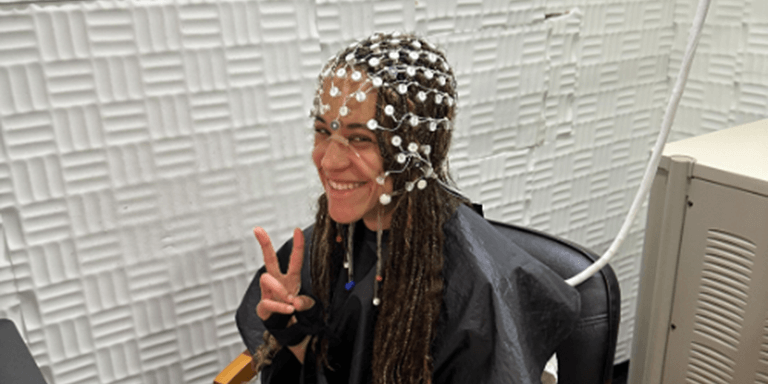RESOURCES
BLOG
Join in the community forum! The thINK blog is a place for community members to share their opinions, best practices, successes, and challenges. Add your comments to the blogs published here or write a blog and we’ll post it for you.

Print for Deeper Comprehension
On some level, I think we all understand that print is a better medium for deeper reading comprehension, but it is nice when a group of researchers takes the time to attach electrodes to some middle schoolers to prove it. That is exactly what Dr. Karen Froud and her team did in a 2024 study entitled “Medium Matters: How Children's Brains Handle Reading from Page vs. Screen.”
Results from the Study
Dr. Froud of the Neurocognition of Language Lab in the Department of Biobehavioral Sciences at Teachers College (Columbia University) in New York City is the primary author of this study. She leads a brain imaging research facility. Her team set out to investigate “brain-level differences” in children when reading in print compared to reading on a screen. The study participants were comprised of 59 middle-schoolers, aged 10 to 12 years old, from the metropolitan New York area. To monitor their brain activity, the participants wore headgear that looks something like a cross between a 1960s lady’s bathing cap and a grid of Christmas lights.
The network of interconnected electrodes in the headgear is capable of detecting electrical signals generated by the brain. These signals can be linked to specific human behaviors, including reading. Scientists who do studies like this have found that these signals can result from the subject reading individual words. The researchers in Dr. Froud’s study were particularly interested in electrical signals that appear when the reader is confronted by words that do not belong in a particular context. What they found was that the study participants had deeper levels of processing when reading from paper than when reading digitally.
This does not mean that screens are not as useful for reading, but it does indicate that certain types of learning tasks may be better accomplished via reading on paper. The study’s authors stated, “Knowing that different mediums are best suited for different kinds of tasks can help educators and parents to be mindful and selective about when print or screens are most appropriate.”
The study’s authors acknowledge that further research is needed, and also that there are situations where being able to change font size and contrast on screen may be advantageous to the reader. In addition, digital media offers the ability to engage with text in ways that print cannot, such as links that guide the reader to relevant information.
“Learning to read is such a crucial skill for engaging in school, and society. If we can understand more deeply how this profoundly human skill is mastered, we can help children and teachers to make more effective use of different media for information processing and retention,” Dr. Froud noted.
There were three key findings from this study:
- Digital text presentation is associated with shallower processing.
- There is a “Print Advantage” for deeper processing of information.
- There is value in using different media for different tasks.
Dr. Froud concluded that it was crucial for teachers to understand which approaches were best for which types of learning. To that end, her team is planning additional research to help teachers support children of different ages as they develop their reading skills.
Conclusion
This research is important because it confirms what we have long suspected—that print is associated with deeper comprehension. It also highlights the important truth that print and digital will be used side by side, and that service providers can play an important role in guiding their clients to get the greatest impact from whatever media they choose.
Author bio: Jim Hamilton of Green Harbor Publications (www.greenharbor.com) is an industry analyst, market researcher, writer, and public speaker. For many years he was Group Director in charge of Keypoint Intelligence’s (formerly InfoTrends’) Production Digital Printing & Publishing consulting services. He has a BA in German from Amherst College and a Master’s in Printing Technology from the Rochester Institute of Technology.
